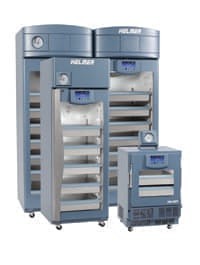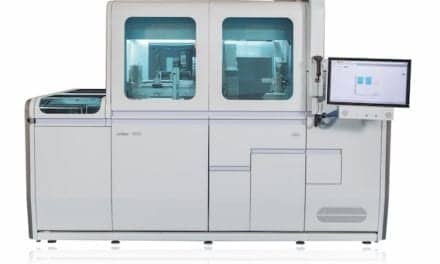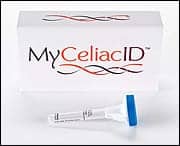Transfusing the profession
BY: GARY TUFEL
The shortage of trained, qualified lab techs in clinical labs is widely acknowledged, but it’s especially critical in blood banks—and especially acute. How serious is it? Why does the shortage exist? What are the long-term ramifications? (Answers follow.)
Blood banks have not been spared from health care spending cuts that have hit many clinical areas within hospitals. “In clinical labs, there is continued pressure to lower costs,” says Lori Gabrek, head of global marketing, Helmer Scientific, Noblesville, Ind. The belt-tightening keenly impacts blood banks, where there is increased focus on patient safety and zero tolerance for error.

Cost-cutting has its limits, though. “Blood products are certainly an expense for any hospital, but the value of safe blood can’t be measured,” says Colleen Holtkamp, product manager, Helmer Scientific. Some challenges can be addressed through automation, which continues to expand and improve control of the process, the quality, and the costs of blood banking, she says.
Automation in the clinical setting should enable laboratorians to focus on patient outcomes and testing data, especially where quick turnaround times are critical. It is important to have a very high degree of quality equipment that offers high levels of safety and reliability, Holtkamp says.
Safety can be enhanced in different ways. “One [way] is the use of high-quality storage equipment, including blood refrigerators and plasma storage freezers, which reliably provide accurate temperature control and tight temperature uniformity,” Holtkamp says. “Another area we support is efficiency and leaner processes, including rapid plasma freezing and thawing.
“Many of our products are available with the advanced monitoring capabilities of the [removed]i.C3™ user interface[/removed],” Holtkamp notes. “Features such as download capability, automatic alarm testing, and event acknowledgement can save technologists’ time and help laboratories operate efficiently.”
Automation Not an Option—but an Imperative
The 2012 “ASCP Vacancy Survey of Clinical Labs in the US,” published in Lab Medicine‘s Winter 2013 edition, connects the dots. It reports that among lab departments, blood banks were second only to phlebotomy departments in the number of employees, with an average of 2,243 employees to phlebotomy’s 2,454, and they were first in the number of managers, notes Nancy Cornwell, MEd, MLS (ASCP) SBB, blood bank specialist, Bio-Rad Laboratories, Hercules, Calif. However, blood banks were also among the leaders in lab departments with the highest number of employees expected to retire in the next 24 months (6%), and among the highest in staff (7%) and supervisory vacancy (6%) rates. Overall, the retirement rate for blood banks was 7%, but blood banks also ranked high among lab departments in the percentage of overall positions left open for more than 6 months, the survey found.
Compounding the shortfall, schools are turning out fewer blood bank techs, who are often looking elsewhere for higher-paying careers.
“In a transfusion service/blood bank, this is very concerning,” Cornwell says. That’s because of all areas in the clinical lab, “the lack of qualified personnel can dramatically impact patient care in very short order.”
It’s a stressful time for blood banks, Cornwell acknowledges, as they are being asked to stretch the proverbial dollar an extra inch. Some blood banks must cut costs by 25% while at the same time budget for pricey items, such as blood cells, platelets, and plasma, among the biggest expenses in the lab, Cornwell says. When a patient needs these products, waiting isn’t an option.
Does that mean the supply is diminishing? Cornwell says no, but there are mandates today to do numerous tests on blood that didn’t exist 30 years ago when, she says, you could count the number of required tests on one hand. Cornwell says there is an argument to be made that, despite significant upfront costs for labs to automate, maintaining equipment is much cheaper than maintaining personnel, noting that equipment doesn’t earn a salary, require benefits, or take breaks.
Fewer Hands on Deck—Help Wanted
A declining number of professionals are entering the blood banking field, and reversing the trend is not simple. The causes are varied, but an industry group is attempting to stem the bleeding.
“I do not think that technology has anything to do with this, except that technology has decreased the number of staff that are needed in some areas,” says Eva D. Quinley, MS, MT (ASCP) SBB, senior vice president, quality and regulatory affairs, New York Blood Center, member of AABB’s board of directors, and chair of AABB’s Transfusion Medicine Section Coordinating Committee.
“We have fewer people in the workforce because they are going into other jobs, both in and out of health care,” Quinley says. “This may be due in part to the fact that laboratory technologists, because they operate behind the scenes, are not as recognized a part of the health care team as are others, such as doctors and nurses. It may also be due to the fact that individuals fear that they would not have job security because technology may mean they are no longer needed.”
That’s why AABB, along with other organizations representing clinical labs, has developed PR campaigns to recruit qualified individuals, and to inform the public of the critical role that laboratorians play in health care.
Quinley surmises that health care economics poses a big challenge. “Hospitals and blood centers alike must operate as lean as possible,” she says. “Often, this means operating with less staff or with staff that are less specialized. In the past, blood bank laboratory staffers were specialists; they worked only in the blood bank. Now we are seeing that those who work in the blood bank may be generalists and work [in] all areas of the clinical laboratory.”

“Laboratorians are so much behind the scenes that they are not visible to the public,” Quinley says. “Being a doctor or a nurse is recognized as prestigious; being a lab technologist may not be. Many young people entering the workforce aren’t even aware of lab careers.”
Fewer people coming into the field means fewer opportunities to train future experts to troubleshoot and solve problems, she says. Clinical lab workers are vital because important health care decisions are made based on lab technologists’ work. “Even with automation in blood banks and labs, there’s nothing like a qualified, trained, skilled laboratory technologist,” Quinley says.
AABB aims to illuminate unfamiliar ground and vanquish negative perceptions. “We’re trying to provide information to educate young people, and to make lab work as attractive as being a nurse or a doctor,” Quinley says.” AABB deploys volunteers to talk to young people about lab careers at job fairs, health fairs, and career days, and participates in programs nationwide such as the Health Occupation Students of America. “[We’re] reaching out to students who are interested in health care, to let them know there’s a need for trained people who can solve problems in the lab,” she says.
Metrics are needed to measure the success of these programs, but AABB is optimistic. A selling point may lie in medical technology careers serving as gateways to more advanced health care careers, and as stepping stones to medical or management careers. With problem-solving, management, and other skills, a medical technology career can be just the beginning, Quinley says. She recalls reading a brochure about a medical technology career while sitting in her guidance counselor’s office, which led to her 37-year career in the field.
| AMONG THE OTHER COMPANIES THAT OFFER BLOOD BANKING PRODUCTS: Abbott Diagnostics: www.abbottdiagnostics.com HemoCue: www.hemocue.com Life Technologies: www.lifetechnologies.com Ortho Clinical Diagnostics: www.orthoclinical.com Roche Diagnostics: www.mylabonline.com Sarstedt: www.sarstedt.com Separation Technology Inc: www.separationtechnology.com Streck: www.streck.com |
Blood Management—Antidote to Shortages
The aging of the population is another factor in the blood bank dynamic. There’s no shortage of donors or blood supply, except for expected seasonal shortages, Cornwell says, but the lower birth rate may take a toll. “As the population ages, users of blood are older, and there’s an accompanying higher demand for blood,” she says. But the declining birth rate could mean a shortage of eligible donors in the future, and more rigorous testing may mean that everyone who wants to donate blood may not be eligible, she adds.
One way to ensure there’s enough blood for those who need it is more appropriate utilization of blood products, Cornwell notes. In other words, physicians need to be better trained in ordering blood. The Institute for Patient Blood Management & Bloodless Medicine and Surgery, Englewood Hospital and Medical Center, Englewood, NJ, offers a “progressive approach to blood management to all patients” in its care, according to the facility’s website.
Its stated goals are to “improve patient outcomes, respect the needs of patients for whom blood transfusion is not an option, and educate other medical professionals in how Patient Blood Management can improve medical and surgical outcomes for all healthcare consumers.” Since its inception in 1994, physicians from every discipline have been specially trained and practice bloodless medicine and surgery at the Institute. Tens of thousands of patients at Englewood Hospital, from the United States and abroad, have received medical treatment and undergone highly complex procedures such as brain, open-heart, orthopedic, and gastrointestinal surgeries without blood transfusions.
Although automation is here to stay, Cornwell says there is still manual testing, especially in smaller facilities, which may be less likely to be able to afford the cost of automation. Even some larger, automated blood banks still perform many tasks manually. For instance, unexpected test results must be resolved before a transfusion takes place and resolved manually, since this requires a skilled technologist. However, automation can handle more routine duties, freeing up skilled technologists for more complicated work.
Blazing New Ground—Molecular Testing, Vending
The newest testing frontier is molecular testing, in which donor and recipient are DNA-tested to get a more perfect match, Cornwell says. This option is still in the very early stages of development.
Also in increasing use, Cornwell says: blood bank vending machines. Similar in appearance to dispensers of soft drinks, candy, and chips, these refrigerated machines, which have been placed by some facilities in the OR and ER, contain units of blood. To access the machines’ supply, physicians or nurses scan their own and their patients’ ID numbers and the machine dispenses the correct, cross-matched, pretransfusion-tested blood.
Gary Tufel is a contributing writer for CLP. For more information, contact Editor Judy O’Rourke, [email protected]





